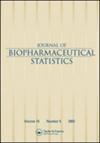使用标准泊松分布的替代品进行稳健的安全监控和信号检测。
IF 1.2
4区 医学
Q4 PHARMACOLOGY & PHARMACY
引用次数: 0
摘要
要评估产品的整体效益与风险之间的关系,并做出关键的开发决策,就必须正确、及时地描述开发中药品的安全性特征。对于正在进行的临床开发,基于定量统计推理的全面、稳健的安全监测和安全信号检测计划至关重要。本文介绍的方法可用于安全信号检测和定期安全监测。本文考虑并进一步研究了各种统计属性、分布和模型,全部采用贝叶斯框架,以确定适用于各种情景和情况的稳健方法。本文提出了针对具有可变风险时间和基本恒定或非恒定危险率的发病率计数(包括具有欠分散分布的发病率计数)而开发的方法,并将其与旨在评估不良事件发病率或二项式发病率比例(假定基本恒定危险率和随后的泊松分布用于事件计数建模)的传统方法进行了比较。本文章由计算机程序翻译,如有差异,请以英文原文为准。
Robust safety monitoring and signal detection using alternatives to the standard poisson distribution.
Proper and timely characterization of the safety profile of a pharmaceutical product under development is imperative for assessing the overall benefit-risk relationship of the product and for making key development decisions. For ongoing clinical development, a comprehensive and robust safety monitoring and safety signal detection program which is based upon quantitative statistical reasoning is critical. Methods presented here can be applied to safety signal detection and periodic safety monitoring. Various statistical properties, distributions, and models, all utilizing a Bayesian framework are considered and further examined in order to identify robust methods applicable to a broad set of scenarios and situations. Methods developed for incidence counts (including those with under-dispersed distributions) with variable time-at-risk and with underlying constant or non-constant hazard rates, are proposed and compared to traditional methods designed to assess adverse event incidence rates or binomial incidence proportions (which assume an underlying constant hazard rate and subsequent Poisson distribution for modeling event counts).
求助全文
通过发布文献求助,成功后即可免费获取论文全文。
去求助
来源期刊

Journal of Biopharmaceutical Statistics
医学-统计学与概率论
CiteScore
2.50
自引率
18.20%
发文量
71
审稿时长
6-12 weeks
期刊介绍:
The Journal of Biopharmaceutical Statistics, a rapid publication journal, discusses quality applications of statistics in biopharmaceutical research and development. Now publishing six times per year, it includes expositions of statistical methodology with immediate applicability to biopharmaceutical research in the form of full-length and short manuscripts, review articles, selected/invited conference papers, short articles, and letters to the editor. Addressing timely and provocative topics important to the biostatistical profession, the journal covers:
Drug, device, and biological research and development;
Drug screening and drug design;
Assessment of pharmacological activity;
Pharmaceutical formulation and scale-up;
Preclinical safety assessment;
Bioavailability, bioequivalence, and pharmacokinetics;
Phase, I, II, and III clinical development including complex innovative designs;
Premarket approval assessment of clinical safety;
Postmarketing surveillance;
Big data and artificial intelligence and applications.
 求助内容:
求助内容: 应助结果提醒方式:
应助结果提醒方式:


